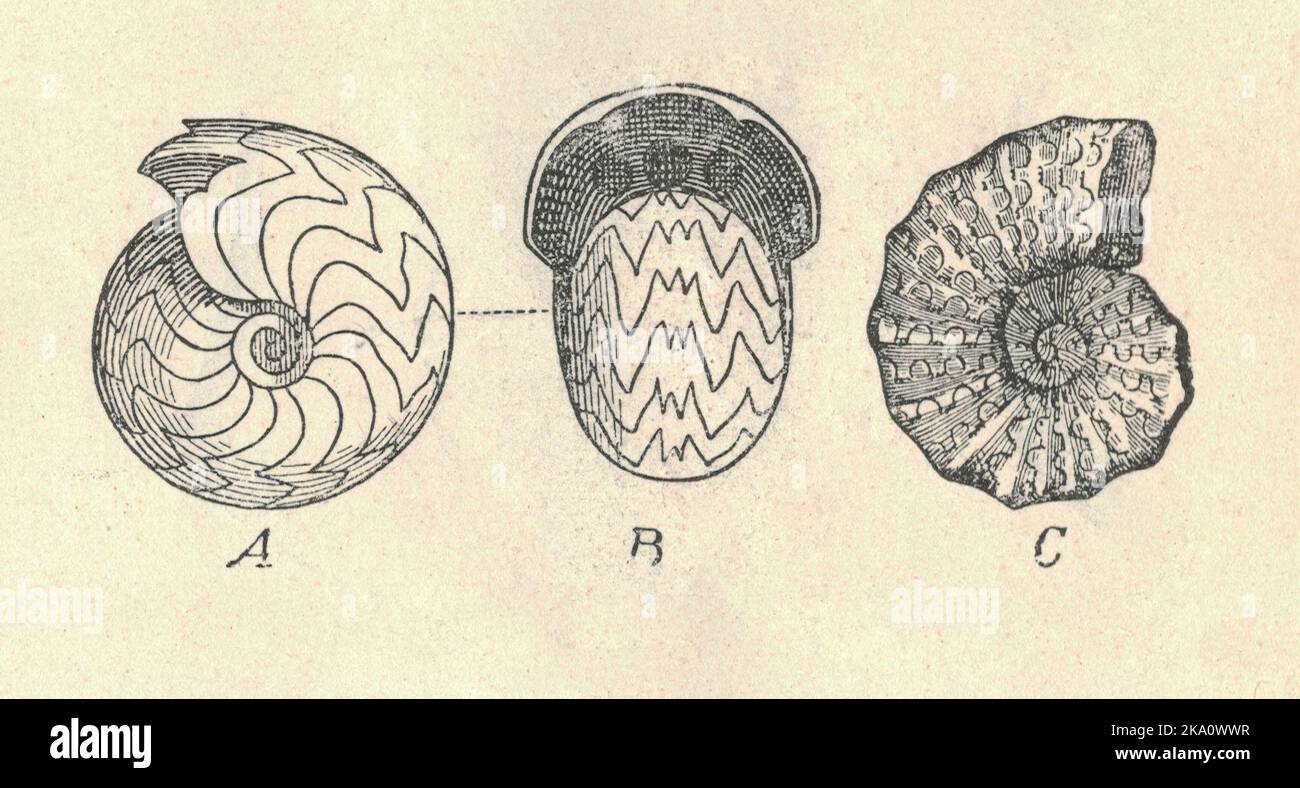Antique engraved illustration of the ammonoidea. Vintage illustration of the ammonoidea. Old picture. Book illustration published 1907. Ammonoids are a group of extinct marine mollusc animals in the subclass Ammonoidea of the class Cephalopoda. These molluscs, commonly referred to as ammonites, are more closely related to living coleoids (i.e., octopuses, squid and cuttlefish) than they are to shelled nautiloids such as the living Nautilus species. The earliest ammonites appeared during the Devonian, with the last species vanishing shortly after the Cretaceous–Paleogene extinction event, durin

Image details
Contributor:
Roman Nerud / Alamy Stock PhotoImage ID:
2KA0WWRFile size:
18.4 MB (910.8 KB Compressed download)Releases:
Model - no | Property - noDo I need a release?Dimensions:
3458 x 1859 px | 29.3 x 15.7 cm | 11.5 x 6.2 inches | 300dpiDate taken:
1907Location:
WORLDWIDEMore information:
This image could have imperfections as it’s either historical or reportage.
Antique engraved illustration of the ammonoidea. Vintage illustration of the ammonoidea. Old picture. Book illustration published 1907. Ammonoids are a group of extinct marine mollusc animals in the subclass Ammonoidea of the class Cephalopoda. These molluscs, commonly referred to as ammonites, are more closely related to living coleoids (i.e., octopuses, squid and cuttlefish) than they are to shelled nautiloids such as the living Nautilus species. The earliest ammonites appeared during the Devonian, with the last species vanishing shortly after the Cretaceous–Paleogene extinction event, during the Danian epoch of the Paleocene. Ammonites are excellent index fossils, and linking the rock layer in which a particular species or genus is found to specific geologic time periods is often possible. Their fossil shells usually take the form of planispirals, although some helically spiraled and nonspiraled forms (known as heteromorphs) have been found. The name "ammonite", from which the scientific term is derived, was inspired by the spiral shape of their fossilized shells, which somewhat resemble tightly coiled rams' horns. Pliny the Elder (d. 79 AD near Pompeii) called fossils of these animals ammonis cornua ("horns of Ammon") because the Egyptian god Ammon (Amun) was typically depicted wearing rams' horns. Often, the name of an ammonite genus ends in -ceras, which is from κέρας (kéras) meaning "horn".